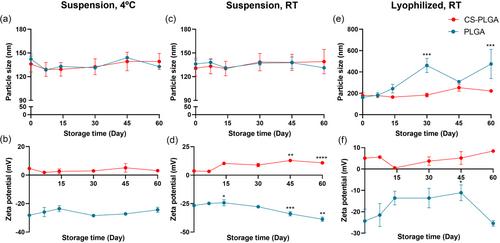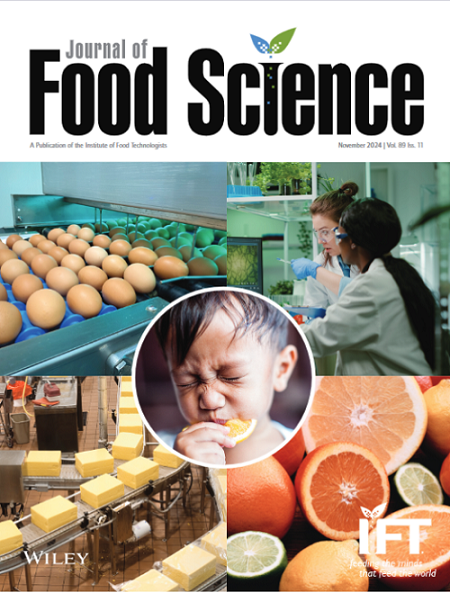Nanoencapsulation of vitamin B2 using chitosan-modified poly(lactic-co-glycolic acid) nanoparticles: Synthesis, characterization, and in vitro studies on simulated gastrointestinal stability and delivery
Abstract
Vitamin B2, or riboflavin, is essential for maintaining healthy cellular metabolism and function. However, its light sensitivity, poor water solubility, and gastrointestinal barriers limit its storage, delivery, and absorption. Selecting suitable nanomaterials for encapsulating vitamin B2 is crucial to overcoming these challenges. This study employed chitosan-coated poly(lactic-co-glycolic acid) nanoparticles (CS-PLGA NPs) as a novel delivery system to enhance the bioavailability of vitamin B2 for food fortification and nutraceutical applications. The nanoparticles, with sizes below 200 nm, exhibited greater stability than PLGA NPs after freeze-drying and in simulated body fluids. Encapsulation improved the photostability of vitamin B2 under ultraviolet light and prolonged its release in simulated body fluids compared to non-encapsulated vitamin B2. Furthermore, CS-PLGA NPs demonstrated higher uptake in intestinal epithelial cells (Caco-2), indicating enhanced transport and potential for use in fortified food systems. These findings underscore the promise of CS-PLGA NPs for delivering vitamin B2 in food, nutraceutical, and pharmaceutical applications.
Practical Application
The use of chitosan-coated PLGA NPs for encapsulating vitamin B2 offers a promising solution to enhance its bioavailability, especially for individuals with gastrointestinal absorption issues. This formulation improves stability, controlled release, and cellular uptake, which can lead to more effective supplementation strategies in nutraceutical and pharmaceutical applications. It could benefit patients with vitamin B2 deficiencies, such as those with malabsorption disorders, by ensuring efficient delivery through the gastrointestinal tract. Additionally, this approach can be applied to other water-soluble vitamins or bioactive compounds, offering a versatile platform for improving the efficacy of oral supplements.








 求助内容:
求助内容: 应助结果提醒方式:
应助结果提醒方式:


